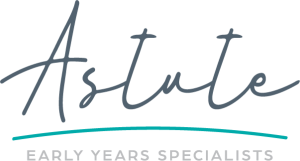(Why) Being in the moment is important…
Life is crazy busy. Our brains are crazy busy. The children in our care are always crazy busy. But hey, that’s life and we have to deal with it, right? Yep, we do. But, there are two ways we can deal with it.
Firstly, we can work at surface level. And let’s be honest, we all do this at times. This is, for want of a better description – well, no, this is the description – where we are a warm body in the playground; a warm body who knows how many children are there, generally knows what they are doing, what the other educators are doing and also, importantly, when their next break is. There is nothing too wrong with being a warm body (well, there is, but that’s a whole other blog post!) because we need them for supervision, ratio’s and oversight right? Yes, yes we do. BUT there is nothing too right either.
The second choice we have is about being mindfully present. Now I’m not going to go all woohoo on you here. But, there is something to this mindfulness stuff. Mindfulness is asking us to slow down. It is asking us to take notice. It is asking us to be present, not only in body, but in mind.
The practice of being present, or mindfully present, is about:
- slowing our minds – being engaged right now, not thinking about what’s coming next
- being more ‘interested’ and emotionally invested in the moment
- being more focused on children when with children
- being more (physically and emotionally) available to children
- changing our thinking from surface level and allowing ourselves to go deeper and
- when having conversations with a child or a colleague, that they have your undivided attention. (Let’s be honest, you can tell when someone’s not in the moment with you. Eye contact is short, body language is off, word length and sentence structures are short…you feel it in a way that is unspoken).
In a practice sense, we have many opportunities to be more mindfully present with young children. When changing a child’s nappy for example, being present means we have a focus on a social and emotional connection and using this moment intentionally to build trust and security in the relationship during this intimate experience. You enact this through gentle touch, gentle words, and eye contact. The opposite of this is moving through the experience on autopilot, barely noticing the child, our actions or what our intent of the moment is (and yes, nappy changes have to have intent and be moments where learning happens – there’s around 9000 minutes of nappy changes in a 6month period – what happens in those 9000 minutes’ matters!).
One easy way to be more present is the simple act of slowing down and noticing more. To this end, we have coined the term the ‘Pedagogy of the moment’to capture this practice. This is where we use the many moments within our day with purpose and intent. Using the Pedagogy of the moment frame asks us to move our practice away from autopilot, habit and routine, always with a focus always on what’s coming next.
Instead, it asks us to focus on what’s happening right here, right now, right in this moment!
We don’t always have to ‘do something with it’ (i.e. document it), but we do need to notice it, acknowledge it, and recognise that children, just like we adults do, notice when someone is not attuned and in the moment with us.
So, we hear by give you permission to slow down, spend more time with children, eliminate routines if you need to and just be with children, and you’ll find that noticing the learning that is going on will come so much easier, your relationships with children will be deeper and more profound, and you’ll enjoy your work in a whole new way! Enjoy…
